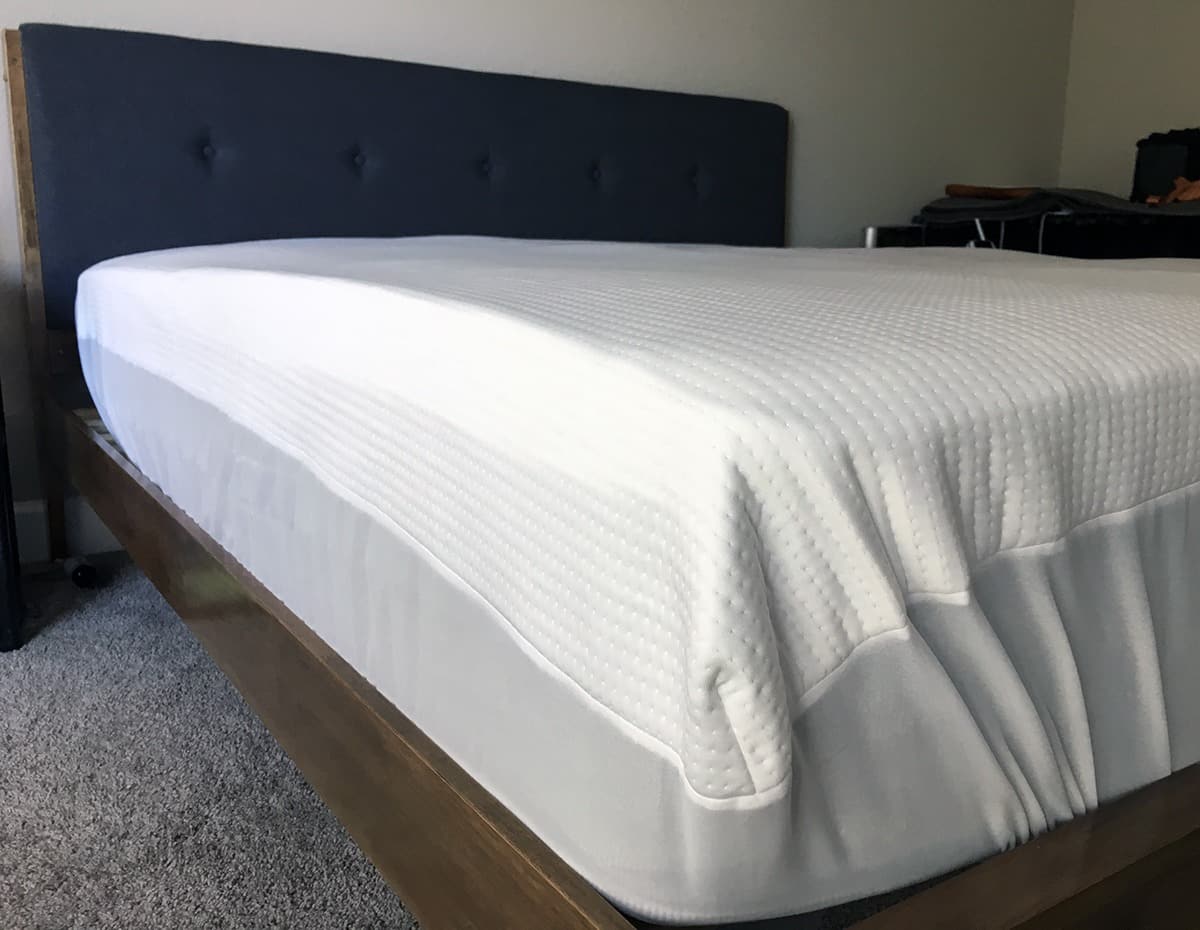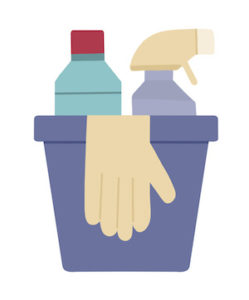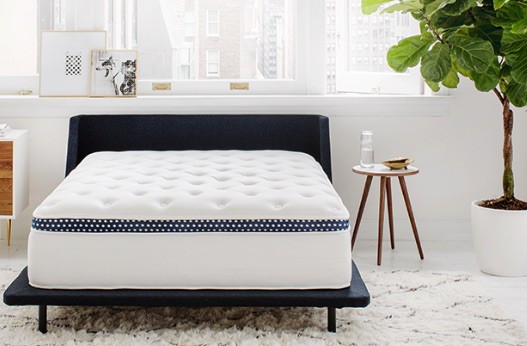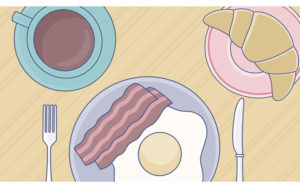If you spend a third of your life sleeping, you’re probably spending a lot of time on a mattress. How long your mattress will last you is determined by a few things, like the type and quality of the materials used in its construction and how well you care for it over the years.
In general, innerspring mattresses should last roughly seven to 10 years, and higher quality foam beds could last up to 15 years. Hybrid mattresses should fall somewhere in between that since they’re a combination of coils and foam, and will really depend on the durability of the materials and construction.
While you can’t keep your mattress forever, you can extend its life by doing your best to keep it clean. One bonus to that is a clean mattress equates to better air quality and a healthier overall sleep environment for you as well.
You want to prevent having to dispose of your mattress too early. To get the most out of your mattress and your sleep, we’ve put together 11 tips to keep your bed in good shape and ensure you have it for as long as possible.
1. Use a Mattress Protector
Throwing a protector over a mattress as soon as someone gets it has the potential to be a game changer. We may like to think that we’re all neat and tidy in bed but things happen. Accidents happen and spills happen and using a protector – especially a waterproof one – will ensure that nothing finds its way from the top of a duvet or sheets into the mattress and ruins it.
In addition to liquids or fluids, bodily oils, and skin flakes can make their way through our sheets and into our mattress as well. Even if we can’t see them.
There are many different types of protectors that come in different materials and price ranges. Make sure you look at your mattress size and height profile before you go shopping. You’ll ideally want a snug fit so you don’t feel the protector moving underneath your sheets.

There tend to be two popular styles: Fitted and Encasement.
- Fitted: Fitted mattress protectors go on your bed the way a fitted sheet does. You will see these almost everywhere because they’re easy to get on and off your bed and are affordable. They typically come in a waterproof version and some have a mattress pad type top. Most of the time just the very surface of your mattress will be protected (the sides may be made of just polyester. However, mattress retailer Purple makes a fitted protector that will protect the top and sides of your bed from water and other fluids.
- Encasement: Encasement protectors do what their name suggests, they encase and protect your entire mattress. These cover all six sides (bottom included) and tend to be zipped up the side. People who like encasement mattresses are usually trying to avoid allergens or giving bedbugs access to their mattress.
One of the biggest reasons I always suggest a mattress protector is that it can help keep people from voiding their mattress warranty. Many mattress warranties say they will be voided if the mattress is stained with any liquids or fluids – which means even a slight accident could stop people from having their mattress replaced if needed.
2. Keep the Mattress Supported Correctly
It is crucial to make sure your mattress is properly supported. That doesn’t necessarily mean you need to go out and purchase a box spring or a foundation, but a solid platform will ensure that your mattress wears evenly and the way they were intended to.
This is another thing you will want to check with your manufacturer on, especially because warranties can be voided if you’re not supporting the bed as advised. Innerspring mattresses tend to need a box spring, while foam beds need a solid platform. If you have a slatted base to your bed, make sure it can support the weight of the mattress and those sleeping on it. Also, make sure to read our piece about whether or not you can put a mattress on the floor.
3. Forbid Bouncing on the Bed
Sorry Five Little Monkeys, bouncing on the bed is not only unsafe but it’s not doing the bed any favors, either. Jumping up and down on a bed puts unnecessary pressure on the mattress and will potentially damage the mattress over time.
You also risk ruining the box spring underneath the mattress or the bed frame, which is not designed to manage the weight of children (or adults) jumping.
4. Avoid Eating in Bed
A simple snack in bed may seem harmless but tiny crumbs that go unnoticed can attract bugs and other small critters.
Paul Bello, an exterminator, and owner of PJB Pest Management Consulting told HuffPost Home that bugs will appear when there are crumbs left around. The most common ones are ants and cockroaches. “The people who are sloppy and don’t clean up after themselves are the ones who run the risk,” says Bello. “Cockroaches need only a little bit of food to survive.”
If you are going to eat in bed no matter what, you should make sure you change your sheets frequently. Kadi Dulude, the owner of top New York City cleaning service Wizard Of Homes, told HuffPost Home that changing sheets every three days would be ideal.
RELATED: How to Wash a Comforter
5. Rotate or Flip Your Mattress Regularly
There was once a time when flipping and rotating a mattress was key to keeping it in good shape. Sleeping in the same spot every night can leave specific wear and tear in one section of the mattress and cause it to wear out more quickly.
While there is a new generation of mattresses made with specific and customized layers may not require flipping – or rotating – some still require at least a rotation on occasion.
The first thing you should do is check with the brand and manufacturer that makes your mattress. They should be able to provide instructions on whether or not you should flip or rotate your mattress. It will likely depend on what type of mattress you have. Typically, memory foam, latex foam, hybrid and innerspring mattresses tend to benefit from a rotation every few months. If you can remember to rotate it 180 degrees when the seasons change, that should work.
Keep in mind that some beds from Tempur-Pedic and Sleep Number don’t need to be flipped or rotated.
Learn more about if you should flip or rotate your mattress and our pick for the best flippable mattress.
6. Vacuum Your Mattress
Yes, you heard right. Making time to vacuum a mattress at least twice a year will help prevent a build up of sweat, dust mites, and allergens, says home maintenance guru, Bob Vila to TODAY. If you can remember to do it when you rotate your mattress seasonally, even better.
First, you should make sure you remove all the linens from your bed before vacuuming. Vila suggests you use the appliance (upholstery) attachment to your vacuum and spend a little extra time on the seams, where the most build-up tends to settle.
Related: Best Murphy Bed Mattress
7. Address and Spot Clean Stains Immediately
Stains happen. Instead of leaving them to dry and pretending they never existed as you pull your sheets back over the mattress, you should vacuum and spot clean them immediately to increase the longevity of the mattress.
 The team at Home Revolution say people should attack stains with lemon juice and salt:
The team at Home Revolution say people should attack stains with lemon juice and salt:
Mix lemon juice and salt together to create a coarse paste. Gently rub it onto the stain, and let it sit for 30-60 minutes. Wipe it off with a clean towel, and the stain will have lightened. The bleaching powers of lemon and the moisture-removing properties of salt are a perfect union stains. However, if you have a dark colored or dyed mattress, do not use lemon because it will bleach and harm the color.
Another option is to combine natural liquid dish soap, baking soda, a few drops of hydrogen peroxide, and water in a spray bottle. Spray it on the stain and then blot away with a clean rag. Although this takes a little extra elbow grease, it does wonders to remove old marks.
Read our full guide on how to clean mattress stains to learn more.
8. Try to Keep Pets Out of Bed
 Soloviova Liudmyla/Shutterstock
Soloviova Liudmyla/Shutterstock
Pets may be sweet and snuggly sleeping companions, but when they join people in bed they’re also inviting a slew of potential germs, bugs, and bacteria into their bed.
“Parasites, most commonly roundworms and hookworms (but there are lots of other equally nasty offenders out there, too), are common in dogs and cats according to the CDC,” says Whitney Coy from SheKnows. “Mostly, these parasites lay their eggs in your pet’s hair, where they can easily be shed onto your sheets. Who wants to sleep with those eggs getting ready to hatch right next to you?”
9. Don’t Let Bed Bugs In
Bed bugs are flat, reddish-brown and small bugs. They can hide easily in all types of bedding, including bed frames and mattresses. They feed on blood from a host and tend to be most active at night.
It pretty much goes without saying that you do not want bed bugs anywhere near their bed. People can take steps to avoid them by taking a few precautions like these:
- Keep the room cleaned and organized so bed bugs have fewer places to hide
- Put an encasement mattress protector that is a bed bug barrier. There are kinds that can be sealed so bed bugs can’t get through.
- Be careful about what second-hand furniture you bring in since bed bugs are great hitchhikers.
10. Deodorize Your Mattress
Part of the mattress cleaning process can involve using baking soda to deodorize. Here is what Consumer Reports suggest:
…deodorize the mattress by sprinkling baking soda over the entire surface. Especially if this is your first cleaning, don’t be afraid to empty an entire 1-pound box onto the mattress. For best results, leave the baking soda there for 24 hours. That means you might need to plan the project around an overnight trip—or be willing to sleep elsewhere in your home. If you can place the mattress near a window, the sunlight will add its sanitizing power.
11. Transport Your Mattress Properly
If you need to move your mattress, the healthiest thing you can do for it – and themselves, subsequently – is to wrap it in plastic before moving. This will keep it from collecting, dust, dirt and other potential issues (like bed bugs) from finding a home in the mattress.
It is also key if you are transporting it in the back or a truck or the top of a car where it’s open to the elements, like an unexpected rain shower.
Read our full guide to learn how to move a mattress.
Featured image: VGstockstudio/Shutterstock
Final Thoughts
Overall, it’s key to make sure you’re taking the right steps to take care of your mattress. The better you care for your mattress, the longer it will last. And when you’re mattress lasts longer, if makes your investment worth it. However, if you’ve taken a look at these tips and think it’s time for a new mattress, take a look at our top mattress that won’t sag (aka a highly rated durable mattress) below:

WinkBed Mattress

Product Details
Our Recommendation
Financing Options
Financing options are available for this mattress.




